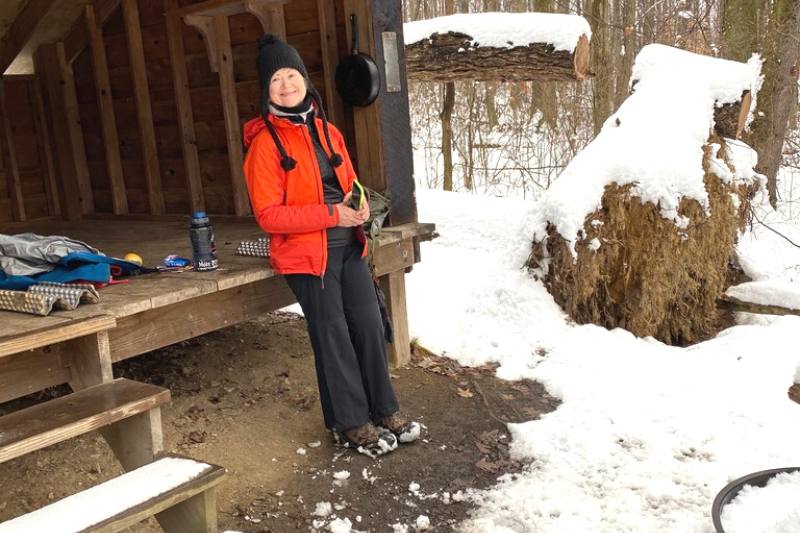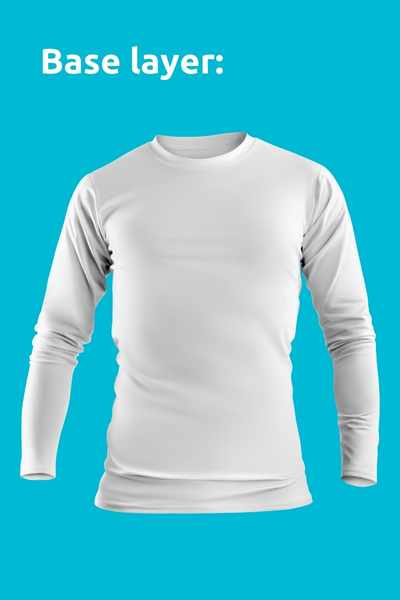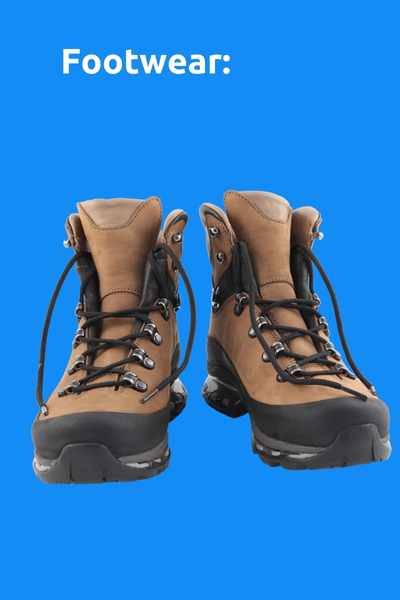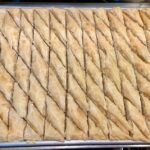Wear proper attire to get the most enjoyment out of your next outdoor adventure!
Getting outside in the refreshing air – no matter the weather or temperature – is good exercise and a great way to mentally recenter and practice mindfulness. Your outdoor adventure requires the right clothing, sturdy waterproof boots, a daypack filled with essentials, and a positive attitude.
Proper clothing is essential for any outdoor activity.
To ensure you are comfortable on your adventure, you should first understand what fabrics are best for your activity and how to layer your clothes effectively.
Your body heats up during physical activity. While sweating is good, overheating is not. Excessive sweating, especially in cold climates, can lead to hypothermia. Hypothermia occurs when the body’s temperature cools to 95 degrees Fahrenheit or less. While hypothermia is typically associated with very cold climates, it is possible to get hypothermia in temperatures above 40 degrees Fahrenheit. If your body remains wet due to rain, excessive sweating, or submersion in cold water, you could be at risk. To avoid this health emergency, layer your clothing so you can release heat and minimize sweating while on your adventure.
Choose the right base layer.
The base layer of your clothing should be form-fitting and moisture-wicking, which will help trap heat but still release moisture. Synthetic fabrics or, better yet, natural merino wool are excellent choices for layering, as they excel at keeping you dry, warm, and comfortable.
Base layers come in three optional weights:
- Lightweight: for moderate to cooler temperatures
- Midweight: for cold temperatures
- Heavyweight: best for below-freezing temperatures
Understand the pros and cons of clothing fibers.
Synthetic materials are usually less expensive and are made from a host of chemically-based synthetics, such as polyester, nylon, polypropylene, and rayon. Synthetics are water-resistant and will keep you warm and dry as the heat and moisture from your body are captured in the fabric. While more economical, the downside to choosing synthetic fabrics is that their production exacts a heavier toll on the environment.
Wool is a naturally grown fiber and is 100% biodegradable and renewable. While it is a more expensive option, it is well worth the price. It can absorb a significant amount of moisture before feeling wet. Wool can keep you warm in cool, damp weather, especially when paired with a waterproof, windproof, breathable outer shell. The only downside to wool is that, once wet, it takes longer to dry than synthetic fabrics.
Another natural alternative is merino wool, a microfiber material created from merino sheep wool that is wonderfully insulating and comfortable to wear with little to no itchiness. Like other wools, this material absorbs moisture without feeling wet and is biodegradable, naturally fire-resistant, and resistant to body odor, thanks to its antimicrobial properties. As with other wools, merino wool takes longer to dry when washed.
Cotton should never be worn as a base layer for winter weather activities. It holds onto moisture and does not dry quickly. Wearing wet cotton apparel can lead to hypothermia even in above-freezing temperatures, so avoid this fabric for your outdoor adventures.
Choose the mid-layer.
The mid-layer is your insulating layer, which is the primary protector of your body heat. It is nice to have a mix of synthetic and down mid-layers (sweaters/jackets). Both have advantages and disadvantages depending on the weather conditions you may face while on your excursion. Packable mid-layers are a great choice, as they can be compressed in a pocket and easily stowed away in a day/backpack.
Synthetic mid-layers are good insulators and will keep you warm and dry even in wet weather. Synthetic jackets combine layered sheets of woven polyester fibers to mimic the insulating qualities of down materials. While synthetic jackets are bulkier than down jackets, they are the material of choice if you will be out in wet conditions.
Down is a natural insulator that is lightweight, compressible, and breathable, making this fabric a great choice for low-intensity excursions. Down originates not from the soft inner layer of feathers found under the exterior feathers of ducks and geese, also known as plumage. There are varying fills for down jackets that range from 600-850; the higher the fill, the warmer and higher quality the jacket. Down insulates best when it is dry and is not recommended for use in wet weather, as it loses its loft and insulating warmth.
Choose the right outer layer.
You should choose a soft, hybrid, or hard shell outer layer that will retain heat and protect you (and your mid-layer) from rain, wind, sleet, and snow.
A Gortex shell is ideal. There are many different types of Gortex products and materials that you can select. Look for an outer layer that has durable water-repellent properties (also referred to as DWR), as it will keep you insulated and dry.
Depending on your activity level and comfort, you may need to remove or add extra outerwear for your journey, such as a base layer, a merino wool or fleece sweater, and an extra pair of wool socks. It is always better to err on having more than less.
Choose the right footwear.
Footwear is essential to any outdoor activity, which is why it’s important to make the right choice for you. While you can start your footwear search with others’ recommendations, you should always take the time to try shoes on and ensure that the fit is good before you go on an excursion. If you feel any rubbing or hot spots, try a different brand or style. Small fit concerns can magnify into larger issues once you’re on the trails. Also, ensure that you are selecting boots, trail shoes, or other athletic footwear that is appropriate for the terrain you will be traversing. An experienced outdoor sales representative from a reputable, quality retailer can offer advice on choosing the best waterproof or water-repellent footwear, insoles, and accessories for your needs.
If purchasing outdoor apparel is cost-prohibitive, or if you’d prefer to make a more sustainable purchase, you can check out your local Goodwill or thrift stores for gently-used gear. You can find many name brands such as Patagonia, The North Face, REI, Arc’Teryx, Marmot, and EMS for a fraction of the cost.
Now you’ve got the gear, but you’re still not ready for your adventure yet! Before you head out, learn how to prepare a daypack like a pro and which ten essentials you should always have with you on any outdoor adventure.

Written by Yvonne Dwyer
Master Naturalist and OPL Content Contributor
“It is truly an honor for me to be a contributor to One Planet Life. By sharing my experiences and lifetime of learning, I hope to inspire conservation, sustainability, stewardship, and awareness of enjoying the natural wonders of the world for the wellbeing of people and the planet.”















